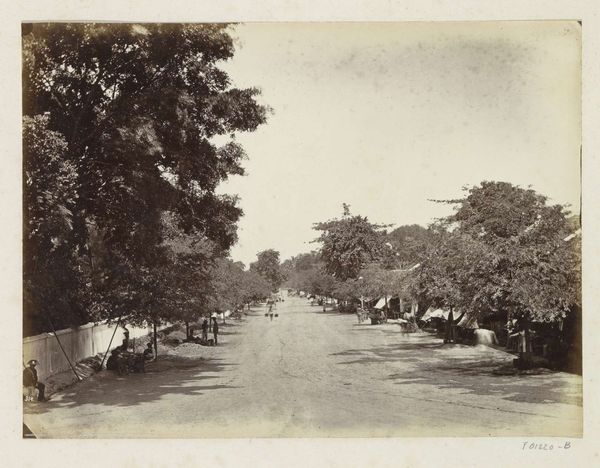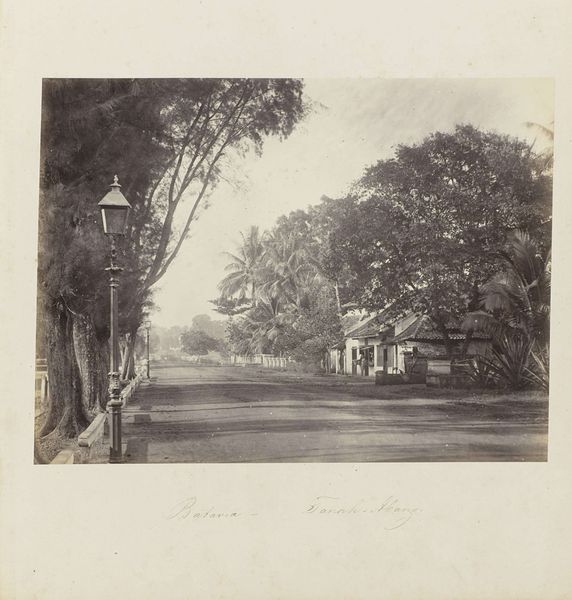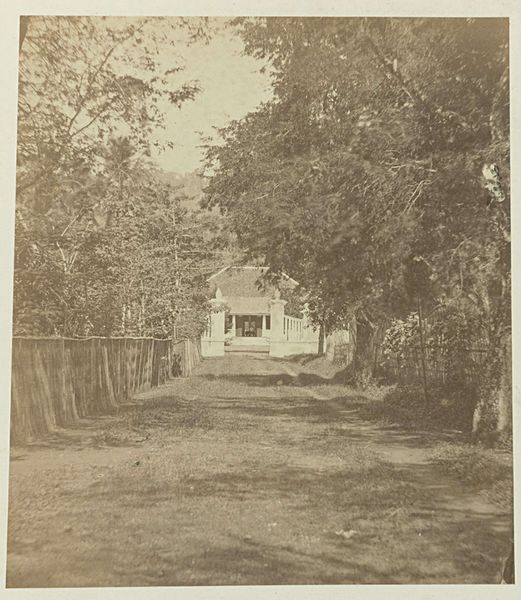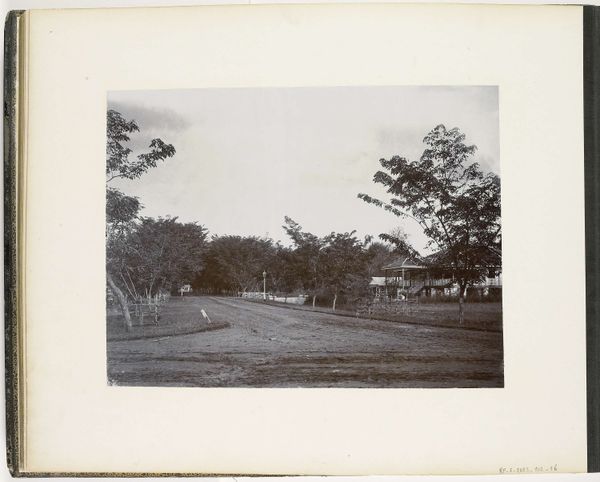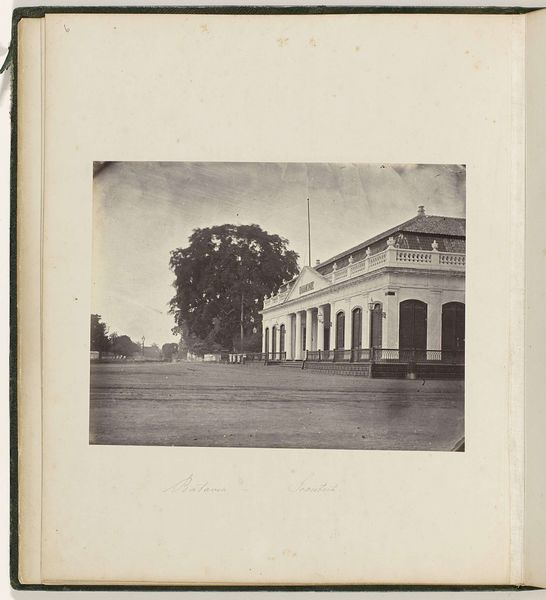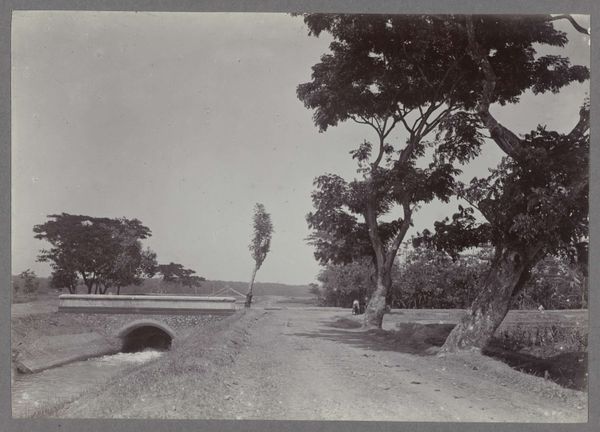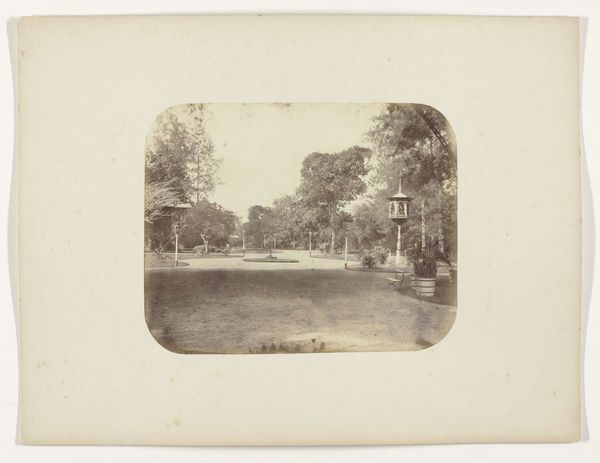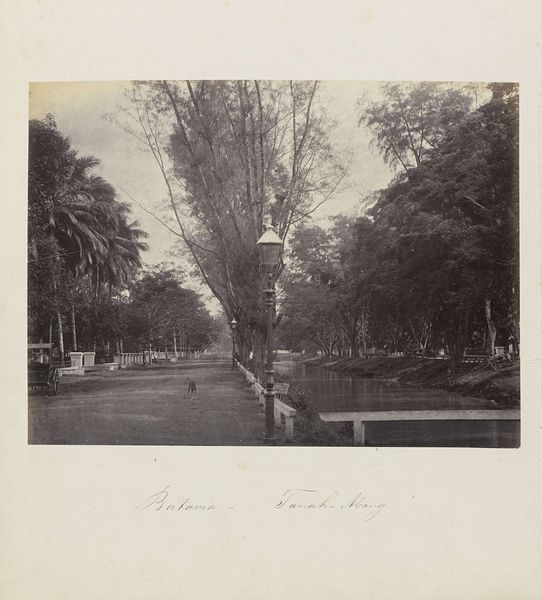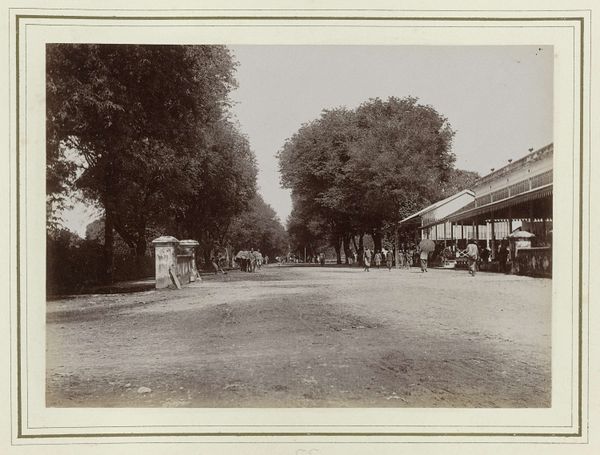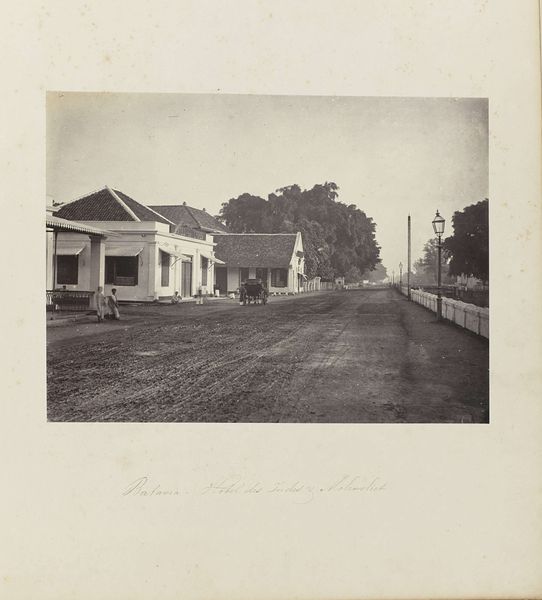
photography
#
landscape
#
street-photography
#
photography
#
desaturated colour
#
street
Dimensions: height 182 mm, width 242 mm
Copyright: Rijks Museum: Open Domain
Editor: This is a photograph entitled "Batavia - Molenvliet & Rijswijk" taken by Woodbury & Page between 1863 and 1866. It's a fascinating street scene, though the desaturated tones give it a somewhat melancholy feel. What catches your eye in this photograph? Curator: The composition is immediately striking. The linear perspective, anchored by the central road, pulls the viewer’s gaze deep into the frame. The strong horizontal lines created by the walls and architecture on either side serve to both contain and direct this visual flow. Notice how the subtle variations in tone and texture within the road surface itself add depth. Editor: Yes, I see what you mean about the road texture adding depth. So, the photograph is essentially about lines and perspective? Curator: Not *essentially*, but the formal elements are undeniably crucial. The placement of the buildings and the rows of what appear to be pillars on either side, all contributing to a rigid, almost architectural structuring of the scene. How does this structuring influence your perception? Editor: It does feel very ordered, even a bit sterile. Perhaps a sense of imposed order on a landscape? Is there significance to how they use light? Curator: The even lighting, almost devoid of strong contrasts, flattens the scene, which reduces the depth in certain respects, and focuses one's view of line. One might even consider the limited tonal range itself as a conscious artistic choice, reflecting the aesthetics prevalent at the time. Do you think this image provides insight to a formal theory? Editor: I guess it suggests how even a seemingly documentary photograph is shaped by artistic decisions about composition and form. Curator: Precisely. Paying attention to formal elements allows for a rich and deep analysis of the visual image.
Comments
No comments
Be the first to comment and join the conversation on the ultimate creative platform.

